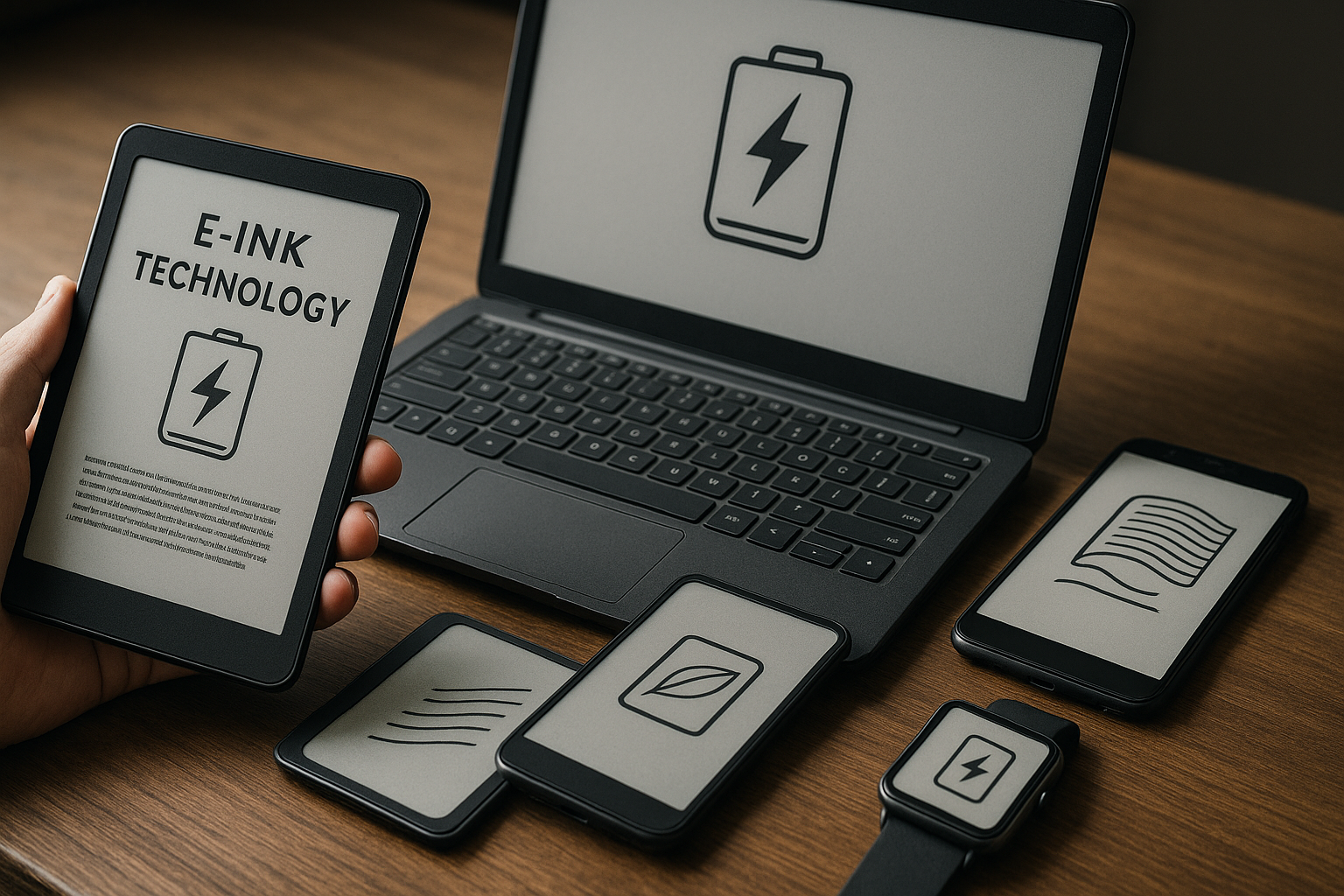E-ink Technology: The Future of Sustainable Electronics
Digital screens have become an integral part of our everyday lives. From smartphones to laptops, tablets, and wearable devices—our world is awash with glowing rectangles. But amidst this digital deluge, a unique technology is slowly gaining ground, promising a more comfortable and sustainable way to consume digital content. Enter E-ink technology—a low-power, flexible, and eye-friendly alternative to traditional LCD screens.

A Flashback to E-Ink’s Origin
E-ink, short for electronic ink, was first developed in the late 1990s by a company called E Ink Corporation. Initially aimed at e-readers and other low-power devices, the technology has seen significant advancements over the years. Unlike traditional LCD or LED screens, E-ink displays don’t emit light. Instead, they work by moving charged black and white pigments around in response to an electric field, creating an image that looks remarkably similar to printed paper.
E-Ink in Today’s Digital Era
Today, E-ink technology has found its place in various products beyond e-readers. It’s used in smartphones, smartwatches, digital signage, electronic shelf labels, and even in some laptops. The most recent development is the introduction of color e-ink displays that can render up to 4096 colors, opening up new possibilities for digital magazines, children’s books, and comics.
In the current scenario, where remote work and digital learning have become the norm, E-ink technology offers a more eye-friendly alternative to traditional screens. The technology mimics the look of ink on paper, reducing eye strain caused by the glare and blue light emitted by LCD screens. It’s also incredibly power-efficient, consuming power only when the image on the screen changes.
E-Ink’s Potential Market Impact
While the E-ink technology has been around for a while, it hasn’t seen widespread adoption yet. However, with growing awareness about digital eye strain and the demand for more sustainable electronics, this could change. Moreover, the pricing of E-ink devices is becoming more competitive, with e-readers now available within the $100 to $300 range.
The market for E-ink devices is expected to grow in the coming years. According to a report by Market Research Future, the global E-paper display market is projected to reach $28 billion by 2025, growing at a compound annual growth rate of approximately 30%.
Future Prospects of E-Ink Technology
The future of E-ink technology looks promising. With ongoing research and development, we can expect to see improvements in color reproduction and refresh rate, making E-ink displays more versatile. Flexible E-ink displays are another exciting development, with potential applications in wearable devices and even foldable smartphones.
In conclusion, E-ink technology could play a crucial role in the future of electronics, offering a comfortable, power-efficient, and sustainable alternative to traditional screens. While it may not replace LCD or OLED screens in all applications, its unique advantages make it a compelling option for many devices. And as the technology continues to evolve, who knows what exciting new applications we might see in the future?




